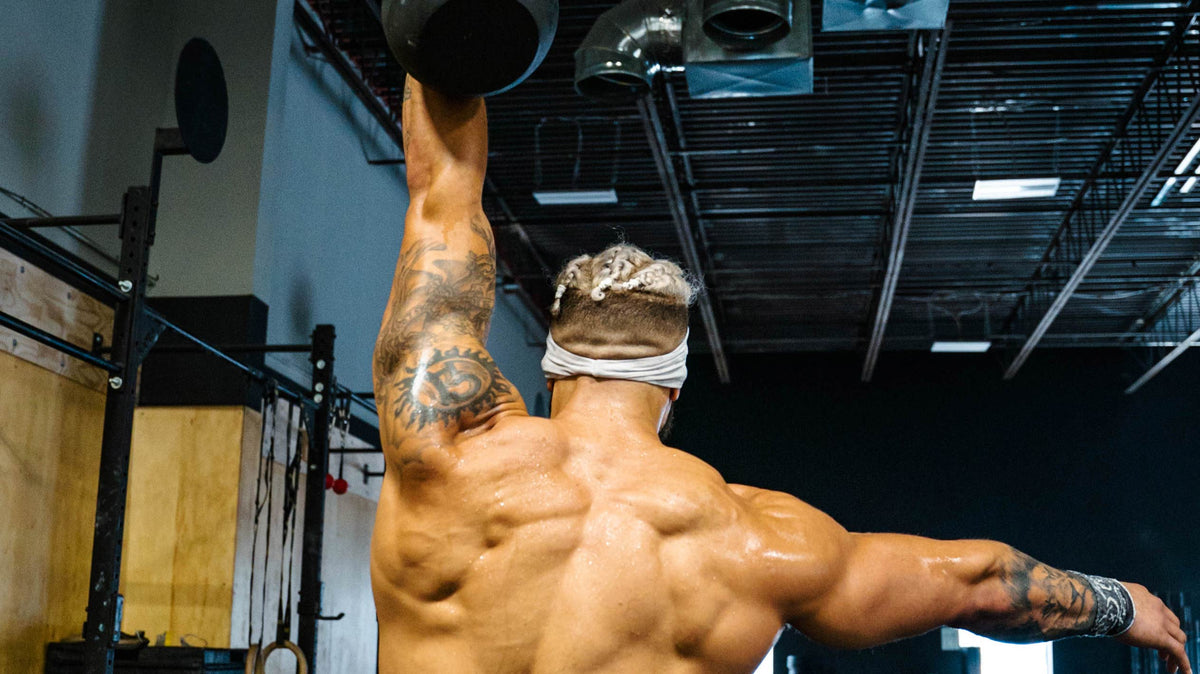Anabolic Window: How Long Does the Window Last After a Workout

After a resistance training session, your muscles are primed to grow. But to grow muscle, your body needs to be well-fueled.
The time period after a workout in which muscles need extra calories is called the anabolic window, and it’s widely misunderstood, both in terms of how long it lasts and how to use it to maximize muscle gain. Here’s how the anabolic window really operates.
Myths Behind the Anabolic Window
When the subject of the anabolic window is brought up, it has previously been thought to be a relatively short window — just a few hours or so. Many people take this to mean that in order to maximize anabolism, you have to eat a huge meal within two hours of working out.
Thankfully, the window isn’t that short — it’s actually about one to two days in most cases. (More on that in a bit.)
Related: 5 Perfect Lunches for Fueling Tough Weekly Training Sessions
Also, the “window” terminology can be a bit misleading. The anabolic window doesn’t close all at once. It’s better thought of as a period of elevated but gradually-diminishing insulin sensitivity during which your muscles are primed to take up nutrients. And in fact, the anabolic window may not even be at its peak immediately after a workout.
Finally, I’ve heard a few people claim that you can’t gain fat during the anabolic window. That simply isn’t true: Your muscles can only hold so much glycogen — and can only absorb it so fast — so it is definitely possible to out-eat the anabolic window.
What the Research Says About Post-Workout Anabolism
Different studies produce slightly different answers about how big the anabolic window is and how long it lasts, but they all agree that it’s sizable (and longer than just a few hours).
In healthy young men performing a light upper-body-only workout, muscle protein synthesis (MPS) remains elevated for at least 36 hours. Interestingly, in this study, it was elevated by 50% after four hours, but by 109% after 24 hours had passed following the workout before rapidly declining from there.
Related: This Is the Ideal Daily Meal Plan for Powering Through Sprint Workouts
In other words, the anabolic window not only closes gradually, it opens gradually, too. If you wanted to eat a huge meal (which you really don’t need to do, given how long the window is), you’d be better off doing it 8-24 hours after a workout rather than directly afterward.

The exact magnitude and duration of the workout will cause the window to vary depending on how hard of a workout you have, as well as your training age. A harder workout might keep the window significantly open for over 48 hours, while a very light workout might only provide a 16-24-hour anabolic window, with MPS elevated by only 40-60% (and even then, only for a brief period within the window).
As for training age, other lines of research show that more advanced trainees recover faster even from higher-volume workouts, and their MPS remains elevated for a shorter period of time.
For those advanced trainees, even a moderately-hard workout may only produce a 24-hour anabolic window. Conversely, for novices, the anabolic window may be up to 72 hours.
How to Fuel and Train to Maximize Anabolic Window Potential
First off, you’ll want a rough estimate of how long your anabolic window actually is. For a moderately-hard workout that leaves your muscles fatigued but not exhausted, follow these guidelines:
- 48 hours for a novice trainee with less than 6 months of training experience
- 36 hours for an intermediate trainee
- 24 hours for an advanced trainee with 5+ years of hard, proper training experience
Increase those numbers by 50% for a workout that leaves the muscles completely exhausted, and decrease them by 30% for a light workout that produces only mild fatigue.
As for the magnitude of the anabolic window effect, that also scales off of the same factors, with one big caveat: The elevation in MPS only occurs to a significant degree in the muscles that were actually trained.
Related: Eat This One Food Before Every Strength Training Session
An 80% increase in MPS in your whole body can easily equate to a bigger overall anabolic window — in terms of how much you can and should eat to fuel it — compared to a 120% increase in MPS that only applies to a third or half of your muscles.
Getting the Timing Down
However long the window is, assume that it “peaks” halfway through that time period. You’ll want to eat more during the first half of the anabolic window, though not necessarily right after your workout. For the second half of the window, you don’t really need to make an effort to eat more, but do make sure to get your protein in.
The overall number of excess calories you need to eat really isn’t that high. It only takes a few hundred calories to build a pound of muscle, but keep in mind that you do also have to replace the calories that you burned during the workout. There’s no need to eat a giant post-workout meal ... usually.
Related: Mistakes You're Making After a Nighttime Training Session That Are Risking Tomorrow's Gains
The exception here would be if you’re an advanced trainee (meaning your window is only 24 hours) and you trained in the evening, so you only have time for one meal before bed. In that case, you may need to eat one especially big meal during the first half of the anabolic window.
For most people though, eating an extra two or three hundred calories per meal during that anabolic window — and a hundred calories a meal less at other times — is all you need. You can, of course, have the occasional cheat meal, but the anabolic window usually only justifies a small cheat meal — not an enormous one.













